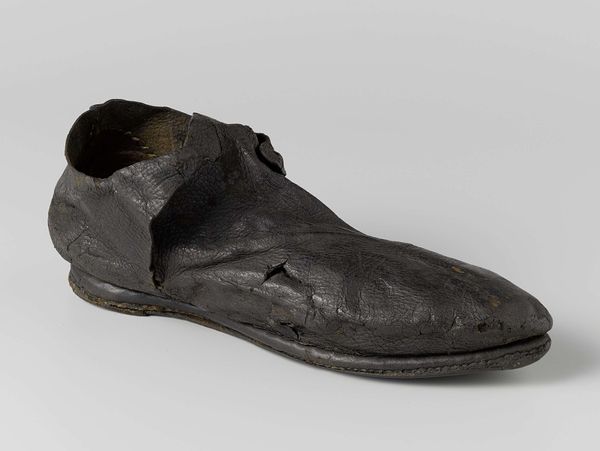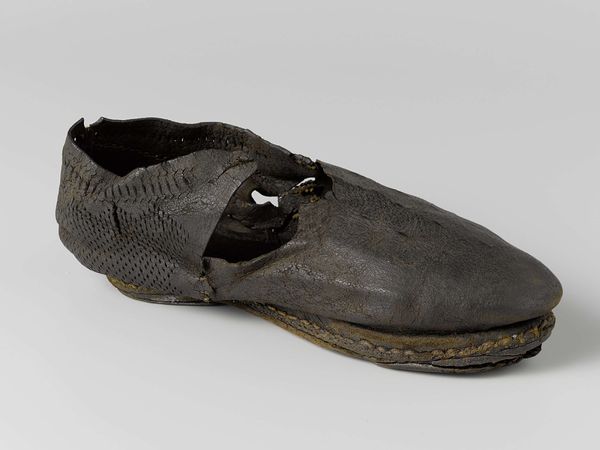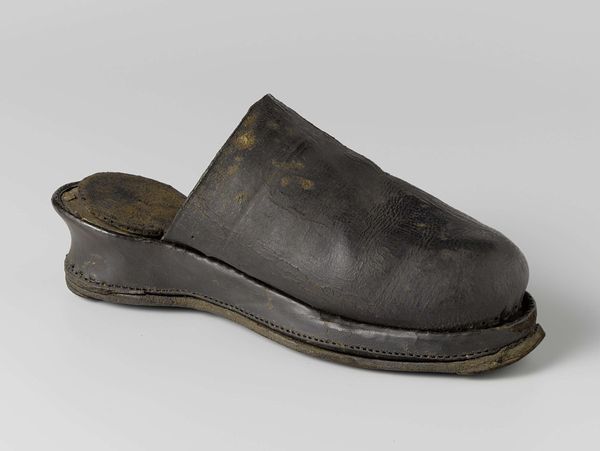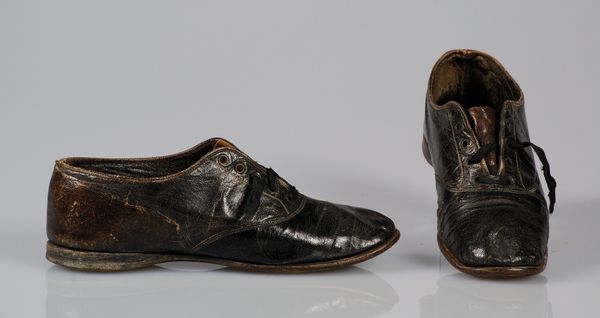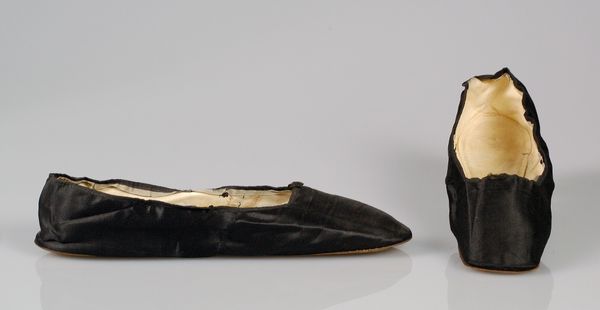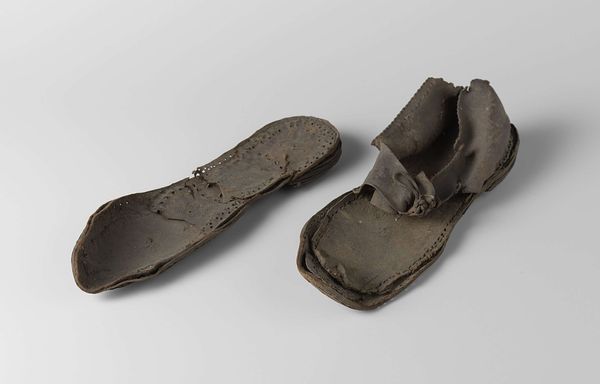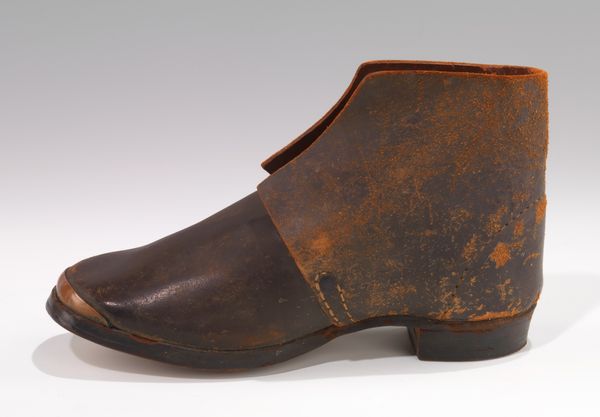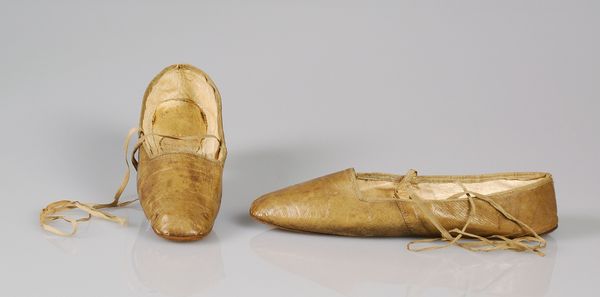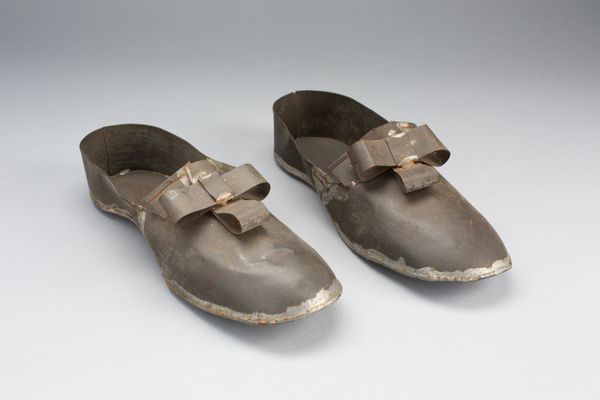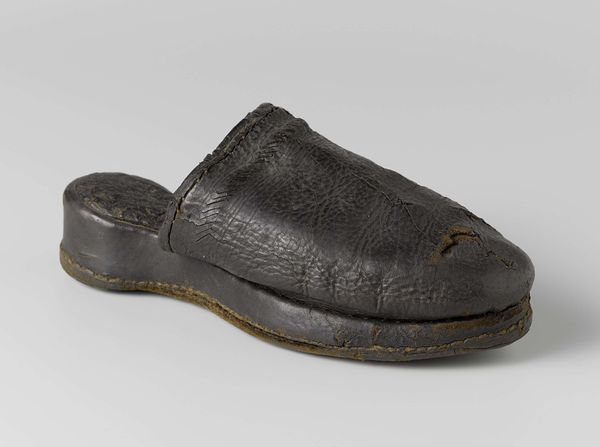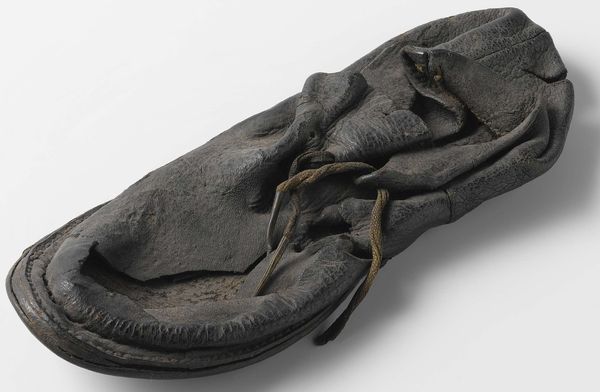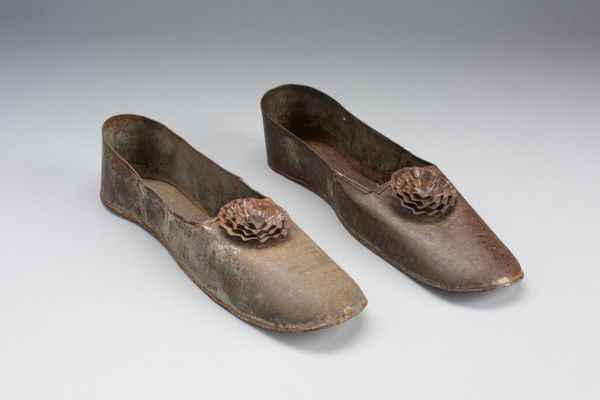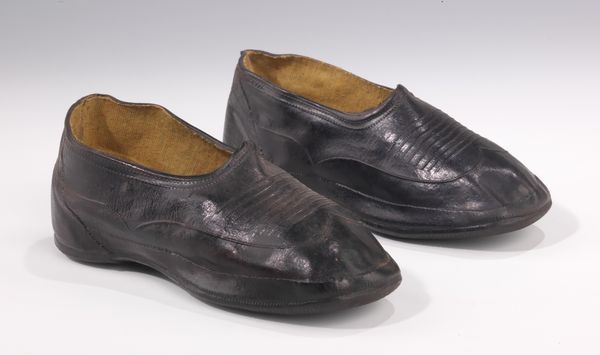
carving
#
portrait
#
carving
#
11_renaissance
Dimensions: height 9.6 cm, length 24.6 cm, width 11 cm
Copyright: Rijks Museum: Open Domain
Editor: Here we have a rather unassuming artwork: "Shoes," dating back to 1590-1596, currently housed in the Rijksmuseum. Carved, it seems, anonymously. There's a certain starkness to its presentation. What springs to mind for you when you consider this object? Curator: Starkness indeed. I see a ghost of a life lived. Imagine the weight these shoes carried—perhaps across cobblestone streets, or treading upon soil tilled by weary hands. Consider the leather, once supple, now rigid with age. It speaks volumes about endurance, wouldn't you agree? I wonder, did someone cherish these shoes, or were they just a means to an end? Editor: That makes me think – did shoes from this time period carry any symbolism, or indicate social status in any way? Curator: Absolutely, objects in art (even a simple shoe!) tell more than what meets the eye. Think about it, this "portrait" of the shoes offers a snapshot of someone's economic standing, possibly hinting at the wearer’s occupation and journey in life, whether peasant or… dare I say, noble. Each wear and tear probably signifies personal histories. Isn't that evocative? What I love about anonymous art from the era is we have complete freedom to construct those stories! Editor: Definitely evocative. I hadn’t considered that angle before. This "humble" shoe seems a lot more loaded with cultural significance and meanings, almost as though speaking without voice of an individual. It really does make you wonder about the history these objects represent. Curator: Yes! Now you're looking beneath the surface; isn't the power of the everyday just stunning?
Comments
rijksmuseum about 2 years ago
⋮
Various stray shoes were found on Nova Zembla. They were clearly not designed to withstand freezing temperatures. The stranded men soon replaced them with homemade fox-fur footwear.
Join the conversation
Join millions of artists and users on Artera today and experience the ultimate creative platform.

